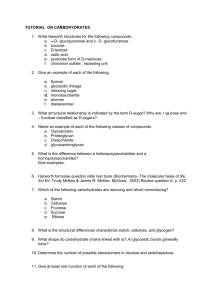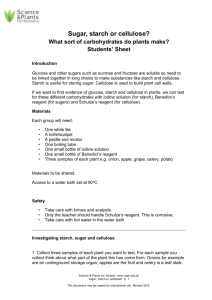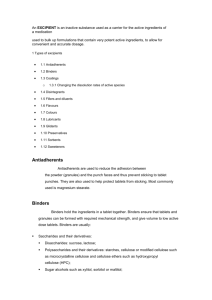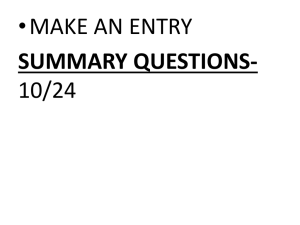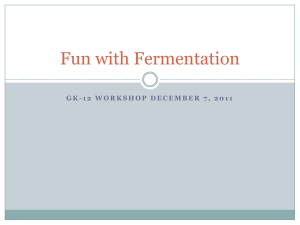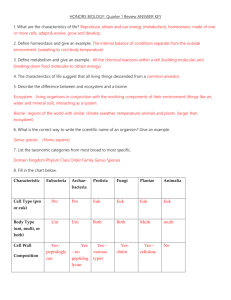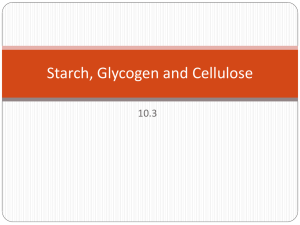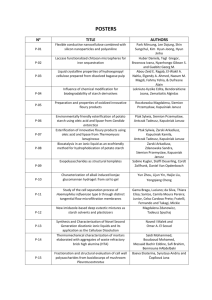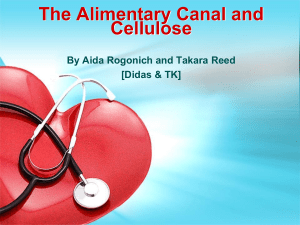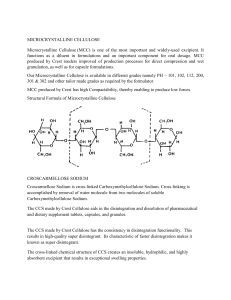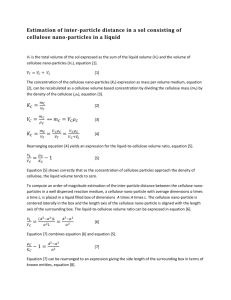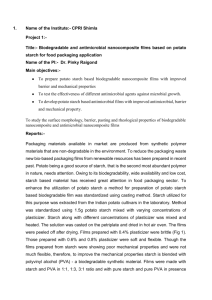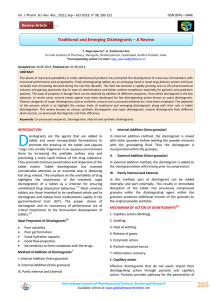Excipients
advertisement
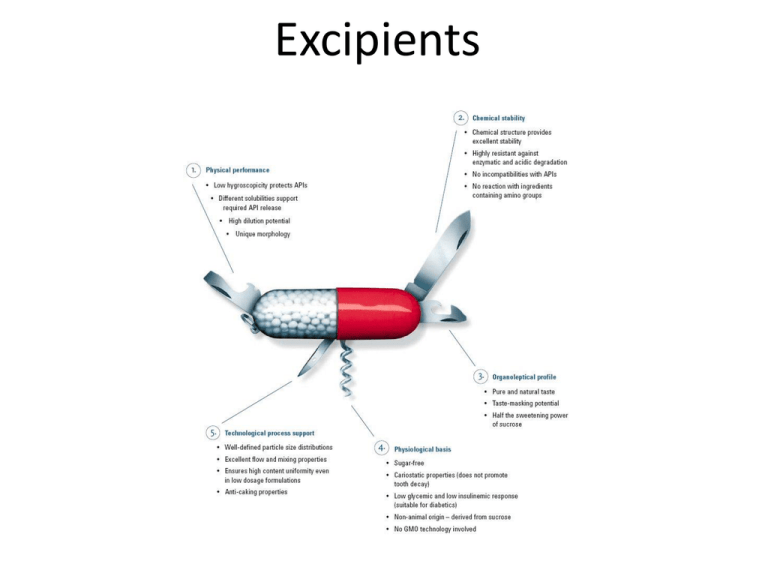
Excipients Excipients are inactive ingredients used as carriers for the active ingredients in a pharmaceutical product. These may be classified into the following categories: Antiadherents Binders Coatings Disintegrants Fillers and Diluents Coloring Agents Glidants Lubricants Preservatives Sorbents Sweeteners Antifrictional Agents and Antiadherents Magnesium Stearate •Antiadherents are used to keep the powder from sticking to the tablet punch face during the manufacture of tablets. •The most common is magnesium stearate The pharmaceutical ingredients must be stabilized toward: • Environmental factors (air, water vapor, sunlight) • Interactions between different ingredients in the drug or different functionalities in the same molecule • Manufacturing stress (sterilization, compaction, etc.) Antioxidants Ascorbic acid Butylated hydroxyanisole Ascorbyl Palmitate Alpha-tocopherol The Ascorbate Radical The phenolic antioxidants are frequently employed in smaller amounts, together with a larger amount of an ascorbic acid derivative, which serves to provide a hydrogen atom to the phenolic radical, thus regenerating the antioxidant species. Binders Starch (1,4-alpha-glycosidic linkages) Gellatin Cellulose (1,4-beta-glycosidic linkages) Polyethylene glycol (PEG) Binders add mechanical strength to the tablet or granules. Monomeric glucose exists as a mixture of a and b-anomers However, once the glucose is polymerized into starch or cellulose, the stereochemistry of the anomeric carbon is no longer in equilibrium. Starch (100 to 6000 glucose units) Starch has 1,4-alpha linkages Cellulose (1800 to 3000 glucose units) Cellulose has 1,4-beta linkages Starch coil Linear Cellulose Cellulose has an extended, and rather stiff conformation and is much less soluble and less digestible than is starch. Buffering Agents Citric Acid Tartaric Acid Sodium Bicarbonate Lactic Acid The pH of the preparation will need to be adjusted to maintain optimum effect and stability of the pharmaceutical. Coatings Gelatin Hydroxypropylmethylcellulose •Most coated tablets are coated with hydroxypropylcellulose •Capsules are coated with gelatin Collagen Gelatin is made by denaturing the triple helix of collagen, a protein which provides structural stability to bones and muscle. Gelatin is made by several processes which employ body parts from cattle, pigs, and horses and utilize chemical processes to achieve partial denaturation of the collagen. Enteric Coatings Cellulose Acetate Phthalate (CAP) Free carboxylic acid remains in polymer. This is an acidic functionality and is deprotonated (ionized) at basic pH. Tablets coated with enteric coatings will release their contents in the small intestine, not the stomach. Such coatings are frequently used on products that my irritate the stomach, such as aspirin. A commonly used coating material is cellulose acetate phthalate (CAP) Non-water soluble Water-soluble ionic form So, when [A-] = [HA], the pH = pKa. The pKa of carboxylic acids is in the range of 3-5. Thus carboxylic acids are protonated (nonionized) in the acidic environment of the stomach [pH = 2], but ionized in the more basic environment of the intestine [pH = 8]. Thus the enteric coating becomes more water soluble (since it is in the ionic form, usually more water soluble than the nonionized form) in the intestine. Sustained Release Technology Most sustained release technology involves the slow transfer of the active ingredient through a polymer matrix. Disintegrants Disintegrants are hydrophillic compounds that assist the break up of granules, tablets, and capsules The most widely used are carboxymethyl cellulose calcium (left) and potato starch (right). • During the compression process that is involved in generating a tablet, the starch particles are deformed. • This deformation is relieved upon wetting and hydration of the starch, thus leading to breakup of the tablet. Assigned Reading Kalasz, Huba; Antal, Istvan. Drug excipients. Current Medicinal Chemistry (2006), 13(21), 2535-2563. CODEN: CMCHE7 ISSN:0929-8673. Link Graduate Students Only: Rios, Maribel. A fresh coat: innovation in excipients. Pharmaceutical Technology (2008), 32 (11) 46-56. Optional Reading: Kumar, P.; Mishra, B. Colon Targeted Drug Delivery Systems – An Overview. Current Drug Delivery (2008), 5, 186-198.
